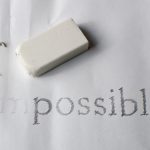Teaching is an interactive process involving the teacher and the students. Communication skills are lucrative and play a fundamental role in these relationships and can be communicated both verbally and non-verbally. Children pick up on our body language and facial expressions and interpret them at face value.
The way we position ourselves in front of children exposes our attitude, confidence, competence, interests and concerns and will create an atmosphere within the classroom. As teachers, we need to be in tuned not only mentally but also kinesthetically with our students and we need to feel how they are moving and be actively moving along with them.
Facial expressions are a great way to express emotions and direction to people of all ages and in general people are very responsive to these actions. Children particularly judge a person based on facial expressions, making eye contact and smiling are simple and trainable ways for one to encourage, and help children feel included in activities. Making eye contact in any setting with as many children as possible will help more individuals to feel included and ready to participate in the activity presented.
When in a larger or more spread out setting, it is important to enhance your expressions, one way in amplifying your direction is by using hand and body gestures along with your facial and verbal directions. These may be more exaggerated in particular settings, as well, it may be more beneficial to use no vocals and strictly rely on gestures, signals and a whistle or other attention-grabbing devices.
When and how we speak are very influential and can encourage or discourage children, or most people for that matter. Practicing effective speech with students while working with them will create a habit of having open dialogue with your students to allow growth and stimulation. This will also create an atmosphere where they are more aware of your presence and help enhance a productive environment and conversations.

Recent Comments